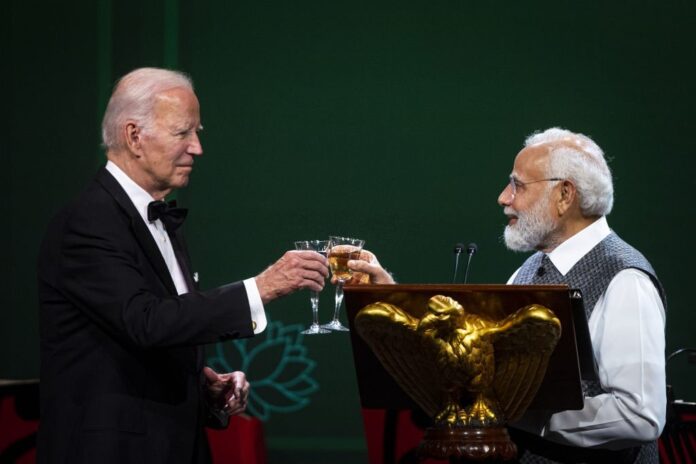
New Delhi/Washington(Reuters) – According to security officials and analysts, India’s significant purchases of U.S. arms are primarily driven by its aim to develop its domestic weapons industry, rather than a shift away from its reliance on Russian defense equipment and towards the West.
As the world’s largest arms importer, India now includes provisions for joint manufacturing or technology transfer in most of its major weapons purchases, regardless of the country involved. Disruptions in military supplies from Russia due to the war in Ukraine have reinforced India’s long-term goal of diversifying its imports or replacing them with domestically produced hardware.
Over the past 20 years, India has bought weapons worth over $60 billion, with approximately 65% or nearly $39 billion coming from Russia. Defense Minister Rajnath Singh has stated that India plans to order over $100 billion worth of weapons from the domestic arms industry over the next decade.
While reducing dependence on Russia is a reality for India, the primary objective is to transition from being an arms importer to developing a self-sufficient defense industry. India’s recent purchases of U.S. defense equipment, including GE engines for fighter jets and the potential acquisition of MQ-9B SeaGuardian drones, reflect this desire for self-reliance. The deals involve provisions for joint manufacturing and assembly in India, aligning with Prime Minister Narendra Modi’s “Make in India” policy.
Eric Garcetti, the U.S. ambassador to India, stated that the United States is now easing India’s access to military technologies, emphasizing increased technology-sharing compared to some of its closest allies. However, stringent U.S. rules on the sharing of military technology still limit future possibilities.
India’s reliance on Russian technology remains significant, especially for traditional arms. Narrowing the technological gap with China, India’s arch-rival, is a key objective. Russia’s war in Ukraine has impacted the delivery of weapons and equipment, further reinforcing India’s determination to diversify its defense imports.
While India aims to reduce its dependence on Russian military technology through purchases from countries like France, Israel, the United States, and potentially Germany, this process is expected to take at least two decades.
As India pursues cooperation with the West, limitations on technology sharing and the strict U.S. export control system pose challenges. Despite deepening ties with the West through alliances like the QUAD, India’s relationship with Russia, which spans decades, remains intact.
Experts suggest that the United States will remain cautious in sharing military hardware and technology with India due to its close partnership with Russia. India is likely to be opportunistic in accepting what the U.S. is willing to offer, but it is unlikely to sever its ties with Russia entirely.
India’s strategic motivation behind its arms purchases and the ongoing shift in its defense procurement strategy. Rather than simply shifting reliance from Russian defense equipment to the West, India’s focus is on developing its domestic weapons industry. This approach is reflected in the inclusion of provisions for joint manufacturing or technology transfer in most major arms deals, regardless of the country involved.
The disruptions in military supplies from Russia due to the war in Ukraine have further fueled India’s long-term desire to diversify its imports and reduce dependence on any one country. With India being the world’s largest arms importer, the country’s aim to develop its own defense capabilities and reduce reliance on foreign suppliers is a significant strategic objective.
The challenges and limitations India faces in achieving complete self-sufficiency in defense production. While India has announced significant purchases of U.S. defense equipment and closer cooperation with the United States, stringent U.S. regulations on technology transfer and export control systems pose obstacles. India’s relationship with Russia, which spans decades and involves extensive defense cooperation, remains a significant factor in its defense procurement strategy.
India’s shift away from Russian military technology will take time, possibly spanning multiple decades, as India seeks to narrow the technological gap with its arch-rival, China. While the recent purchases from countries like the United States, France, Israel, and potentially Germany will gradually reduce the share of Russian military technology used by India, complete disengagement from Russia is unlikely in the near future.
Overall, India’s strategic objective of bolstering its domestic defense industry, diversifying its arms imports, and reducing reliance on any single country. The country’s pursuit of self-reliance in defense production is a long-term process that involves collaborations, technology transfers, and joint manufacturing agreements with various countries, including both traditional partners like Russia and new partners like the United States.





